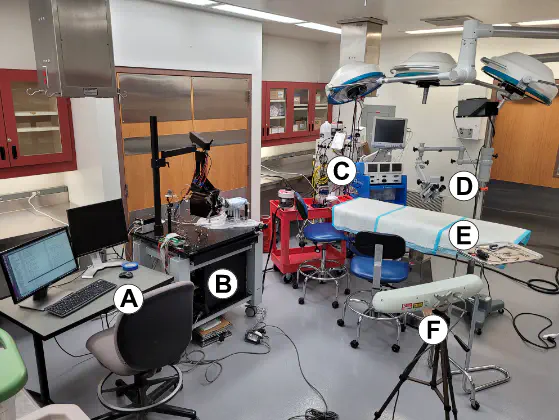Magnetically Steered Robotic Insertion of Cochlear-Implant Electrode Arrays in Guinea Pigs
 Image credit: Unsplash
Image credit: Unsplash
Abstract
With 28 million Americans suffering from some form of hearing loss, cochlear implantation has been found to be an effective, FDA-approved treatment. When the cochlea is healthy despite other damaged or non-functional hearing anatomy, a cochlear-implant electrode array (EA) can be surgically inserted into the cochlea, bypassing the damaged anatomy to electrically stimulate nerves responsible for hearing. Trauma from EA insertion resulting from tip scraping, buckling, or translocation into the adjacent scala via piercing of the basilar membrane, however, can result in decreased implant effectiveness and loss of residual hearing. This work explores a method to avoid this trauma via a magnetically steered robotic insertion of an EA in the standard guinea-pig model for testing cochlear-implant surgery. Previous research examining the feasibility of magnetically steered robotic insertion of EAs has shown promising results in phantom and cadaver models. To further these findings, this dissertation develops various methods to improve and validate this process. First, an algorithm is developed to determine the cochlea position and orientation of a guinea-pig cochlea without the need for CT scans. Using a motion-guided probe to select six points, the cochlea pose can be accurately estimated. Next, an improved image-guided-surgery navigation method for fast and intuitive guidance of the electromagnet used for generating guiding magnetic fields is presented. This new method for guiding surgical tools is found to be more intuitive and 67% faster than state-of-the-art navigation approaches. Next, a study on 18 live guinea pigs evaluating the insertion trauma of in vivo magnetically steered robotic EA insertion in comparison to manual EA insertions, sham surgery, and no-surgery control, using histologic analysis, is reported. Finally, a structured survey of previous work reporting the change in guinea-pig hearing pre- and post-EA-insertion, using auditory brainstem response testing, is presented.